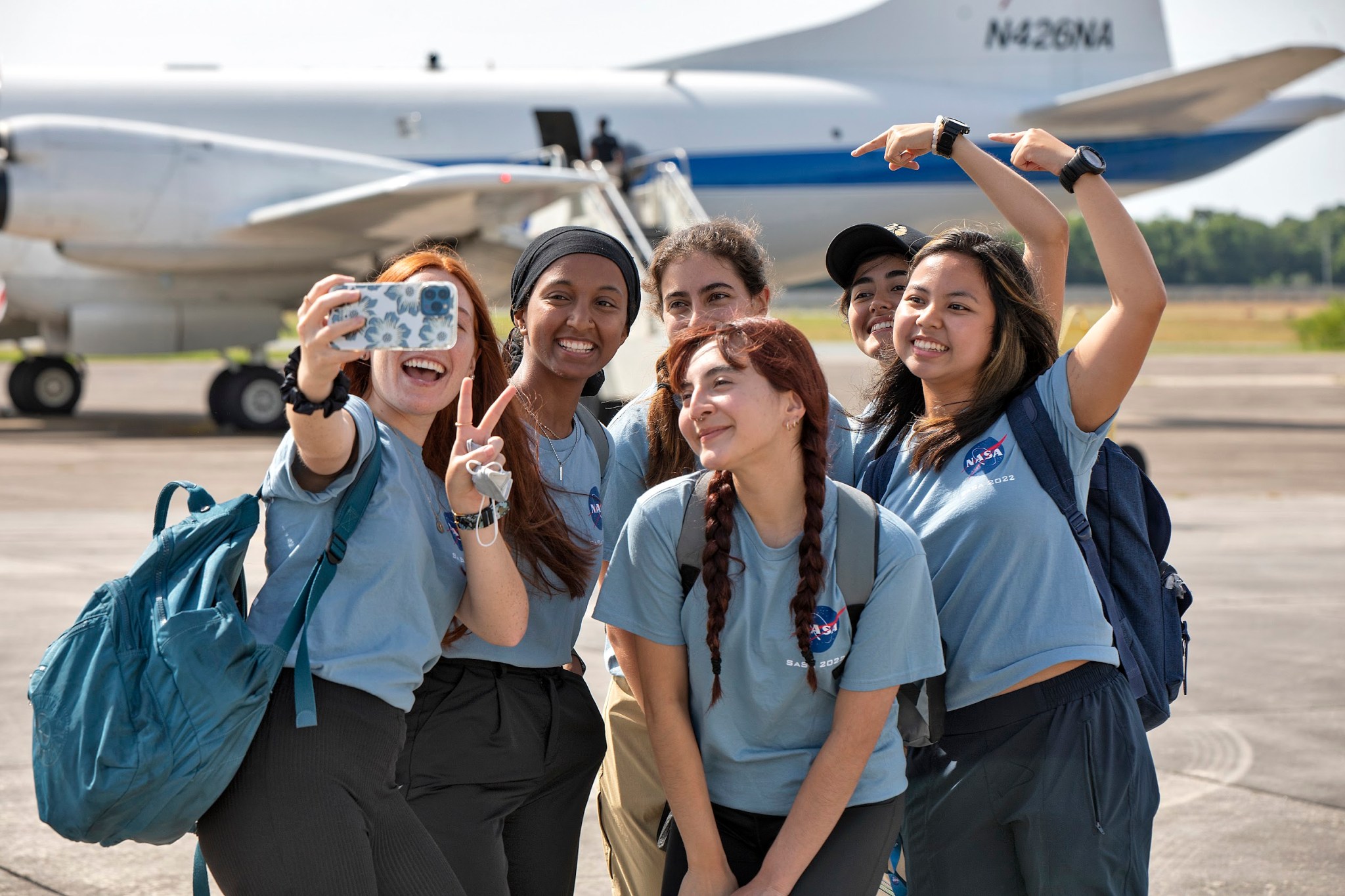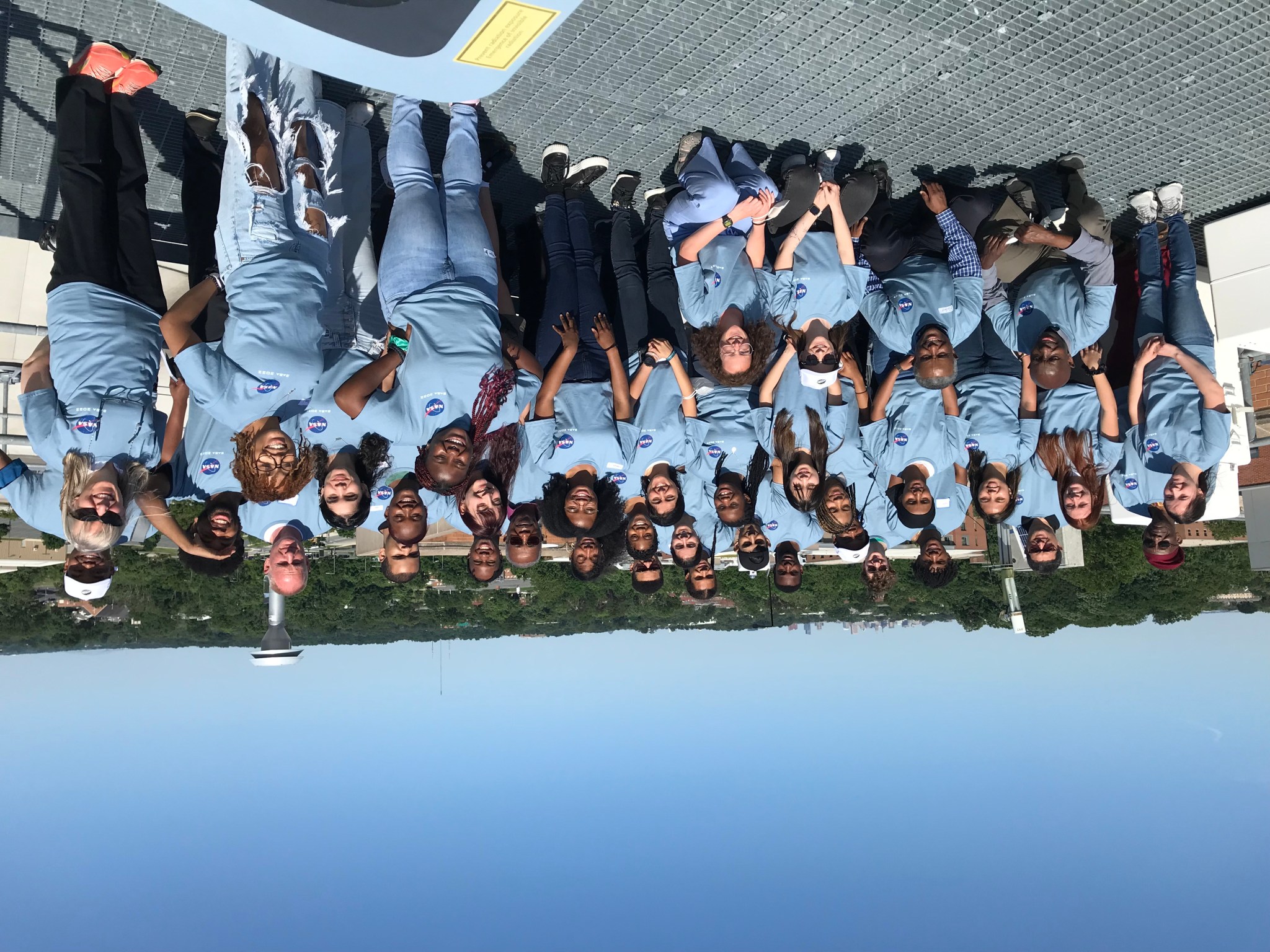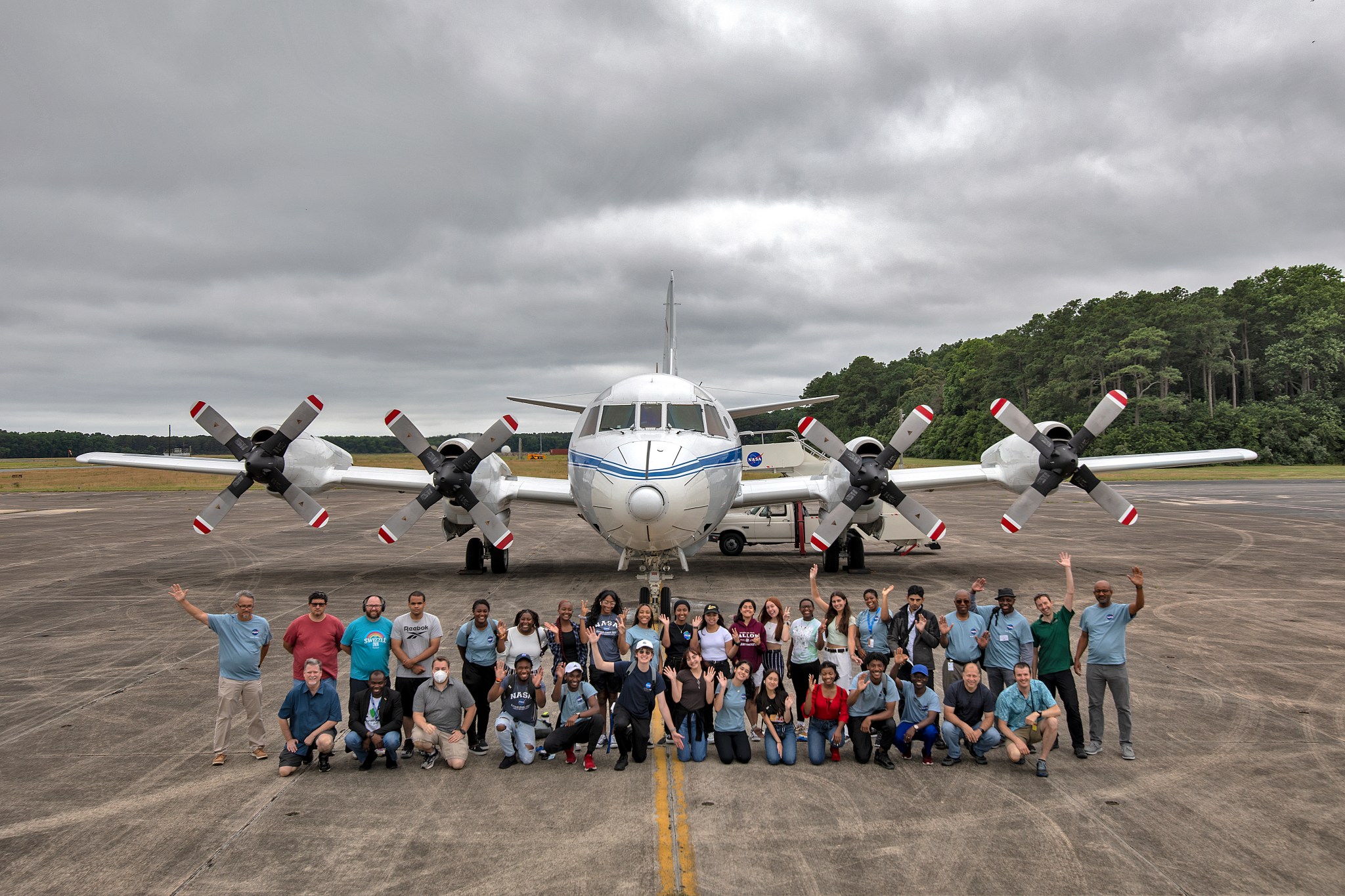
Understanding Earth and the complex influences on our planet’s climate are some of the biggest challenges of our times, and we need all the help we can get to tackle them. But, in the last 40 years, the minority representation in geosciences – meaning Earth, atmosphere, and ocean sciences – has remained relatively low despite its increase in proportion of the U.S. population. This summer, in an effort to address that, a new NASA program welcomed its first class of students.
The Student Airborne Science Activation (SaSa) program hosted 25 undergraduate students for an eight-week summer research opportunity. They gained hands-on experience in all aspects of a scientific research campaign, including gathering data from ground-based instruments and flying aboard NASA’s P-3 aircraft to collect measurements of land, ocean, and atmospheric phenomena.
SaSa’s students were competitively selected for this full-time, paid internship – which includes a stipend, housing, and travel – from minority-serving institutions (MSIs) across the country.
“I see the SaSa program as a catalyst for change for the next generation of STEM professionals – those in science, technology, engineering, and math,” said Samiah Moustafa, program manager for SaSa. “In addition to providing a valuable research experience, it will serve as a long-term base for alumni of the program to receive continued mentorship and professional development support from the SaSa community throughout their undergraduate and early career.”
Learning to Study Earth – from Space, the Ground, the Air

By participating in research activities, SaSa students acquire skills they could one day apply professionally in fields related to energy, resource management, air quality monitoring, and weather prediction. These are all areas that can be influenced by Earth’s atmosphere and climate and where research findings can have significant policy implications.
This summer, in the classroom, SaSa’s participants learned about Earth, atmospheric, and airborne sciences from researchers at NASA and several Historically Black Colleges and Universities (HBCUs) and MSIs in the Washington D.C., Maryland, and Virginia area. These same professionals also welcomed the students into their hands-on research programs.
The young scientists focused on answering questions related to the atmosphere, ocean, and geosciences that contribute to the goals of NASA’s Earth Science Division.
Graduate students on the SaSa team mentored the trainees through the full cycle of a research plan, from developing a feasible research question to identifying and analyzing relevant data sets and formulating the story their results had to tell.
The grad students were integral to the program’s success, and with their guidance SaSa’s participants designed research projects using NASA and related data to address two major themes: How human-caused air pollution has implications for people and the environment, and how large-scale meteorological factors influence local weather conditions.
Their studies relied on measurements taken by satellites, instruments on the ground, and others carried by the P-3 aircraft, one of NASA’s airborne laboratories. The student researchers collected data during flights out of NASA’s Wallops Flight Facility on Wallops Island, Virginia, in early July.
Through the SaSa program, participants learned practical skills for working with science equipment and real data, preparing them to advance their undergraduate studies and potentially enter STEM graduate programs – as well as NASA and other research careers. But science skills are only half the equation. The program also provides the social support important for staying on one’s chosen path.
Paying It Forward
The program’s nickname is an acronym, but it has a double meaning: “sasa” means “now” in Kiswahili – the language also known as Swahili – conveying the urgency of the program’s mission to mentor underrepresented students in the geosciences.
“Our goal is to attract and recruit underrepresented students during their first and second college years, while their perceptions of career opportunities are beginning to form,” said Dr. Charles K. Gatebe, SaSa’s principal investigator and chief of the Atmospheric Science branch at NASA’s Ames Research Center in California’s Silicon Valley. “We want to provide a bridge to influence how and where they choose careers and the means to enter their chosen career.”
Moving from one’s early studies into a career path can be a more difficult transition for some groups of students than others. Black and Hispanic students leave STEM majors at higher rates than white students, and part of the reason may be the lack of diversity around them, research shows. Without many role models, careers in geoscience fields can feel out of reach.
That’s why SaSa aims to bring its participants both skills and support. The students have opportunities to discuss with “near-peer” mentors already on this career path the specific barriers to entering geoscience fields and solutions to overcome them. The program is teaching the ways of field research, while also creating a community of students and positive role models.
Kristina Pistone, a Bay Area Environmental Research Institute scientist based at Ames who provides science support for SaSa, believes the impact of a research internship during college should not be underestimated.
“Part of the reason I, and many others, became a scientist was that I was able to participate in a research program as an undergrad, which allowed me to see science as a viable career path,” said Pistone. “I’m excited to pay it forward to today’s college students.”
SaSa is managed by NASA’s Ames Research Center in California’s Silicon Valley, in partnership with the agency’s Goddard Space Flight Center in Greenbelt, Maryland, Langley Research Center in Hampton, Virginia, and Wallops Flight Facility on Wallops Island, Virginia. Funding is provided by the Science Activation program of NASA’s Science Mission Directorate with additional support from the agency’s Earth Science Division and the Minority University Research and Education Project of NASA’s Office of STEM Engagement.
SaSa’s partner universities are Howard University in Washington D.C., University of Maryland Baltimore County, Coppin State University, and Morgan State University – all three in Baltimore, Maryland – University of Maryland Eastern Shore in Princess Anne, Maryland, and Hampton University in Hampton, Virginia.
More information about SaSa can be found on the program’s website: https://www.nasa.gov/sasa
For media:
Members of the news media interested in covering this topic should reach out to the NASA Ames newsroom.



























